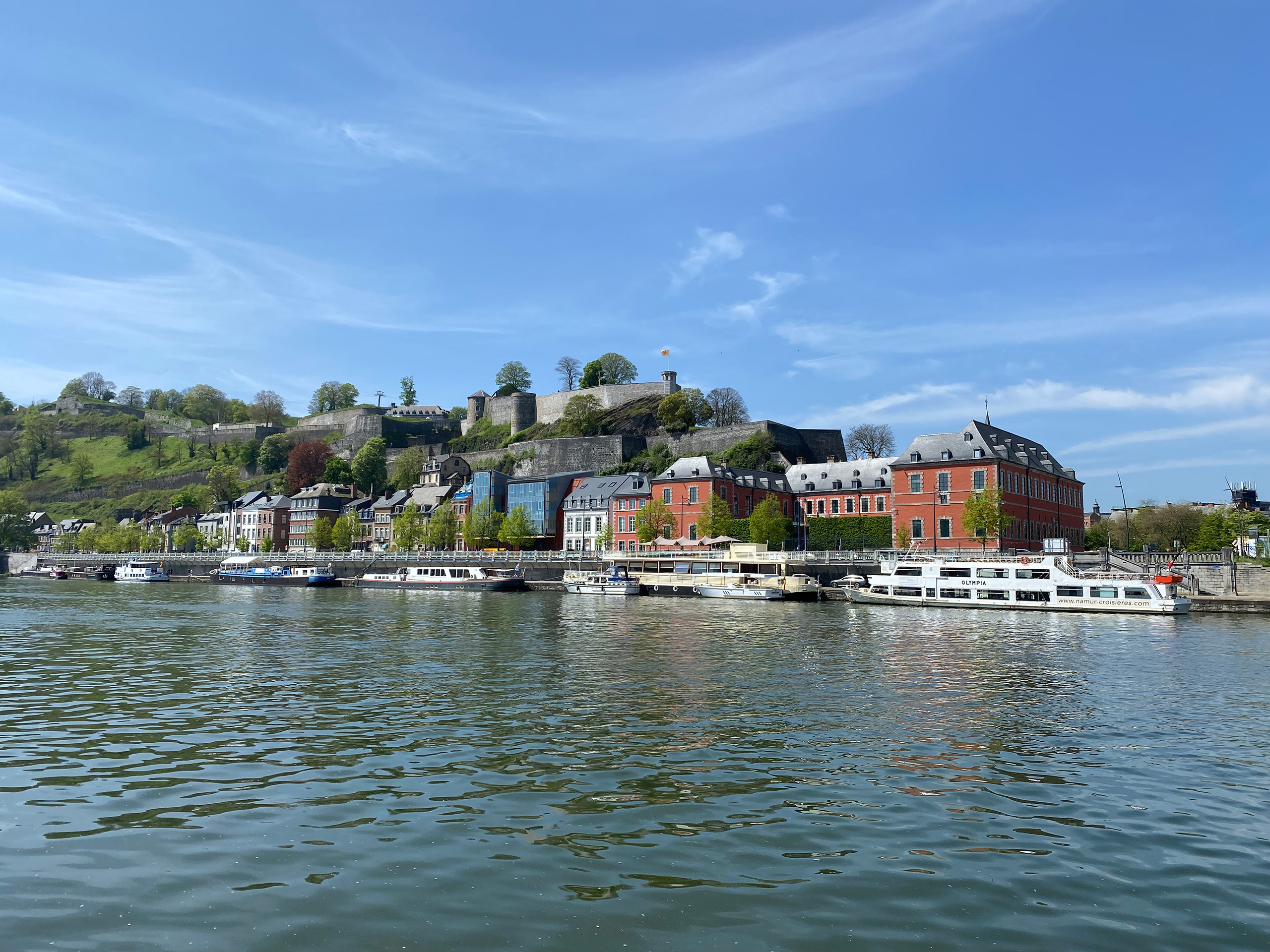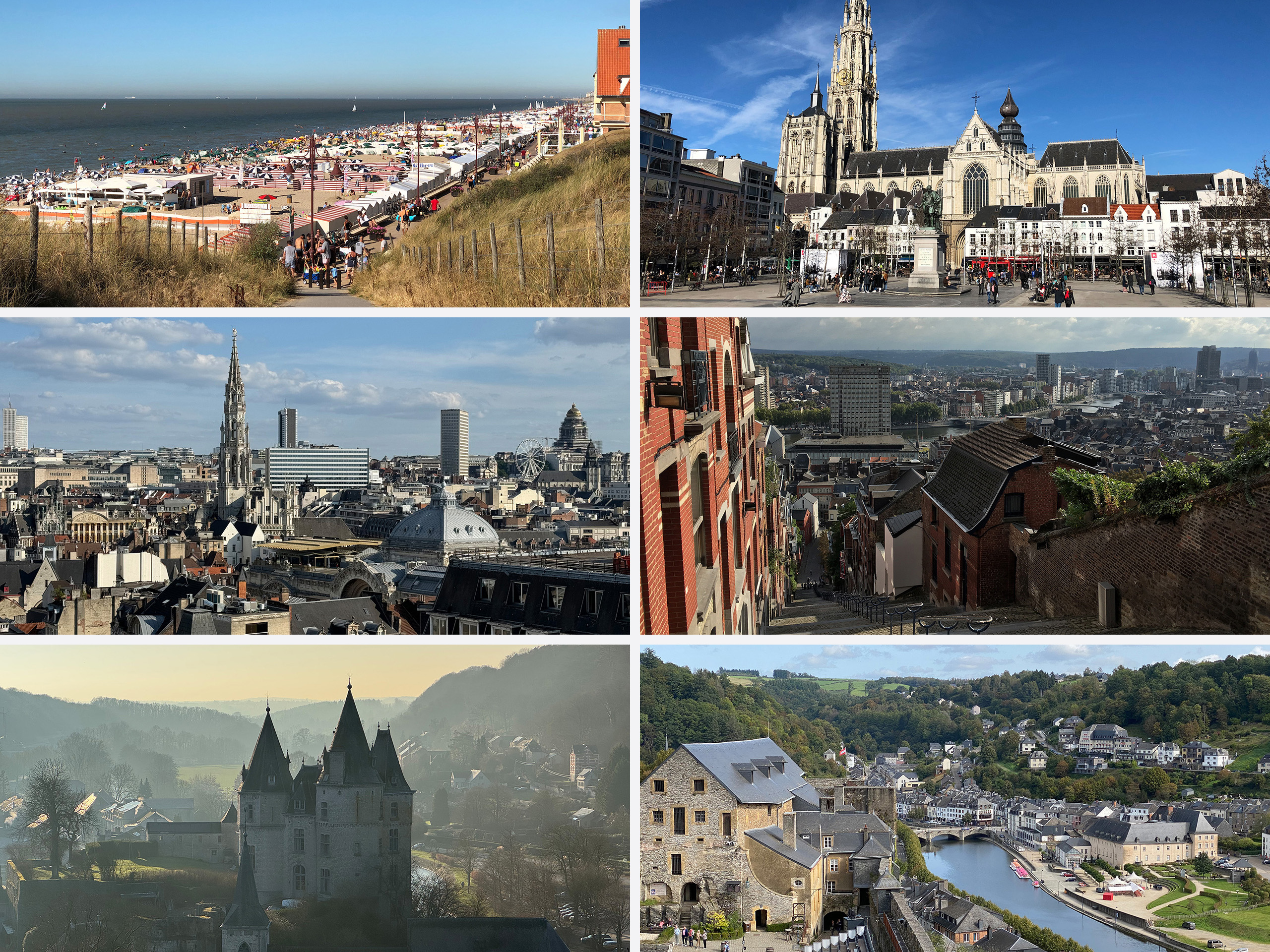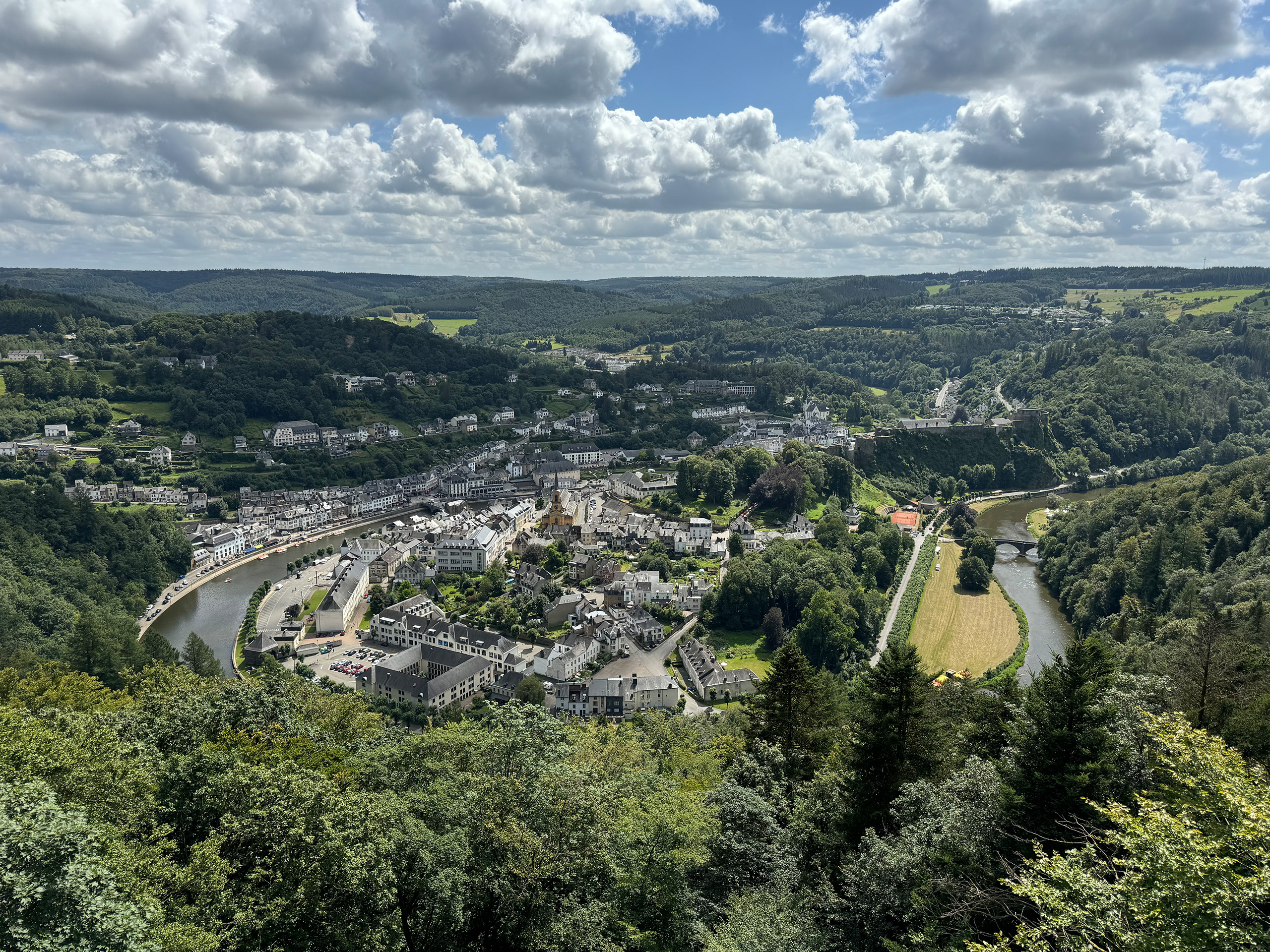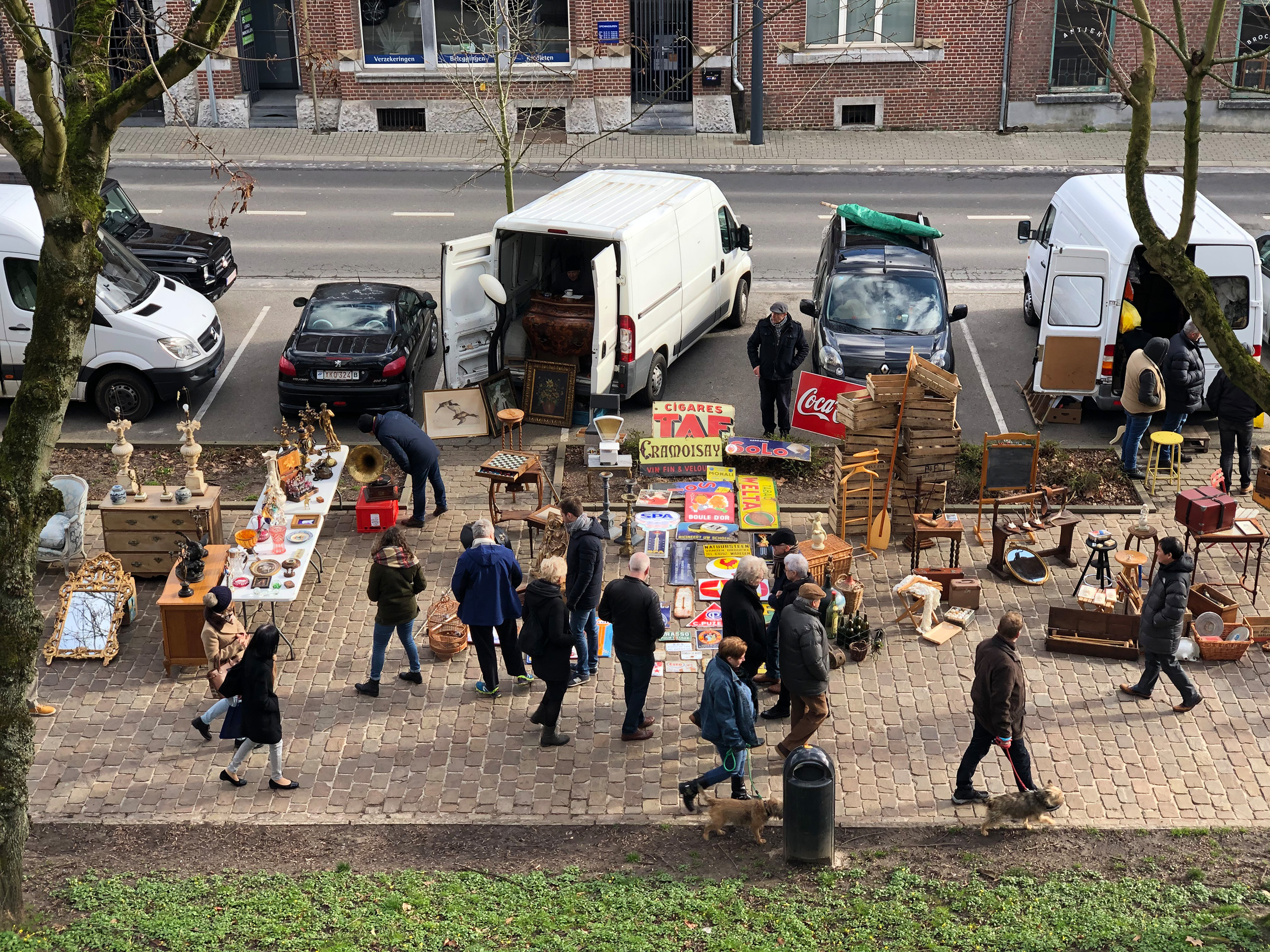
Belgium is a haven for lovers of flea markets. You can find just about everything imaginable, from the 18th century to the 1990s. At good, traditional flea markets, new items are not allowed, but there are plenty of unusual and rare things – that don’t have to be expensive. Markets are organised every weekend in countless locations. There is even a daily flea market in Brussels, while some others only take place once a year.
Here are my personal favourites:
Antiekmarkt Tongeren

every Sunday
Leopoldwal, Tongeren
The Antiques Market in Tongeren is the largest of its kind in the Benelux region. It takes place every Sunday from 7 AM to 1 PM, surrounding the Leopoldwal in the city center. Two large covered areas – the upper hall of the Julianus underground parking garage and the Eburons sports hall – provide additional shelter for the market.
You’ll find mostly classic antiques, furniture, collectibles, and curiosities. The market features around 350 stalls, 40 specialized antique shops, and charming cafés along the way.
Parking options are excellent: the Julianus underground parking garage (Clarissenstraat 41) is located right in the market area and is easily accessible.
Prices are generally moderate, which is why many antique dealers from neighboring countries shop here early in the morning.
Brocante du Marché Couvert de Battice

every Sunday
Rue des Forges les Eaux, Herve
The flea market in Battice, a district of Herve, is held in a fully covered hall that is normally used for cattle trading. It takes place every Sunday from 7 AM to 1 PM, after a thorough cleaning.
A wide variety of items are sold here: knick-knacks, decorations, furniture, collectibles, and tools. It’s not uncommon to discover awesome unusual rarities among the 200 stalls.
There’s a large parking lot directly in front of the hall.
Prices are very low, and the atmosphere is rough but friendly.
Brocante de Spa
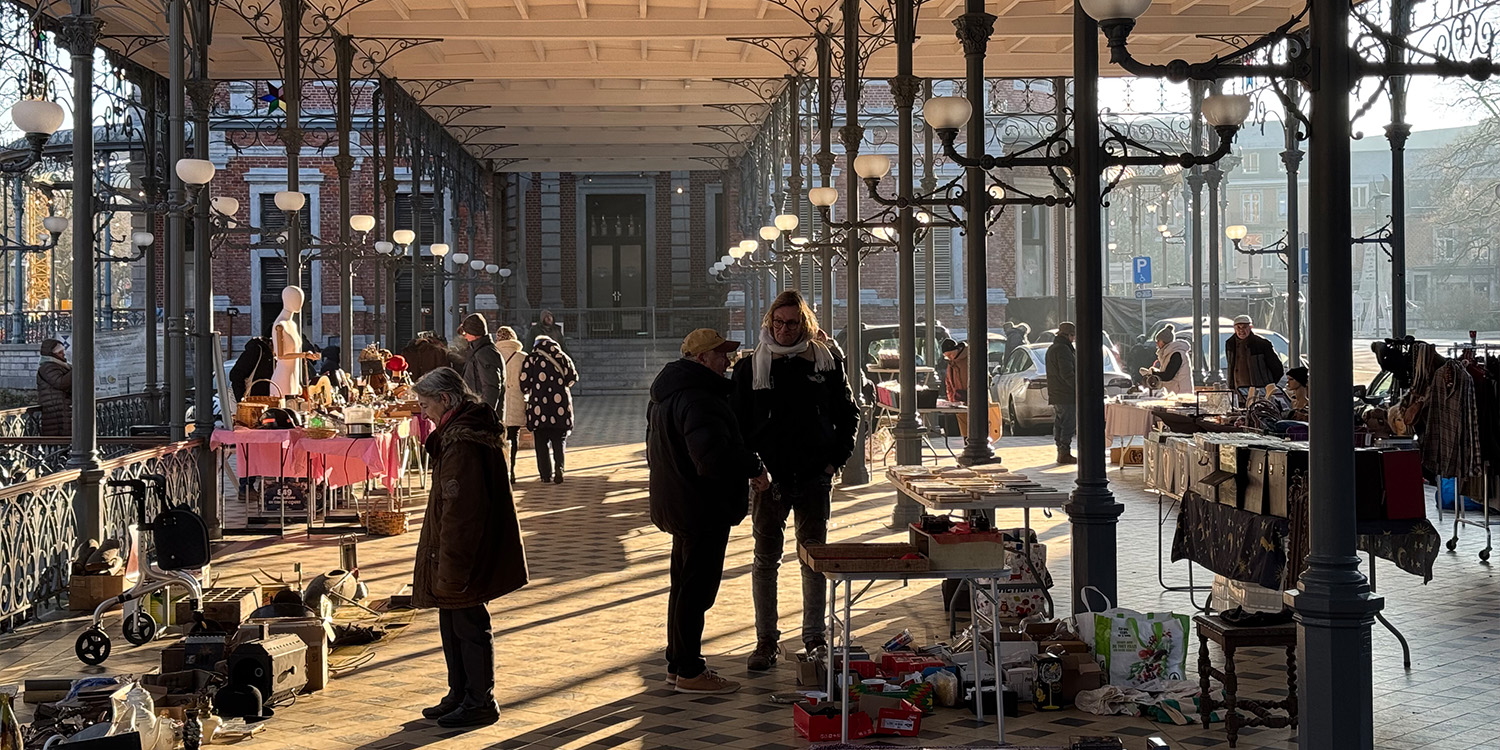
every Sunday
Place Royale, Spa
Traditionally held in a picturesque setting around the Galerie Léopold II in the center of Spa, this flea market has suffered due to the renovation of the gallery and the impact of COVID-19. Nevertheless, I include it here in the hope that it will soon regain its former size and charm.
The market takes place every Sunday from 7 AM to 2 PM. Items sold include second-hand goods and antiques. Parking can be challenging, prices are moderate.
Marché aux puces du Jeu de Balle, Brussels
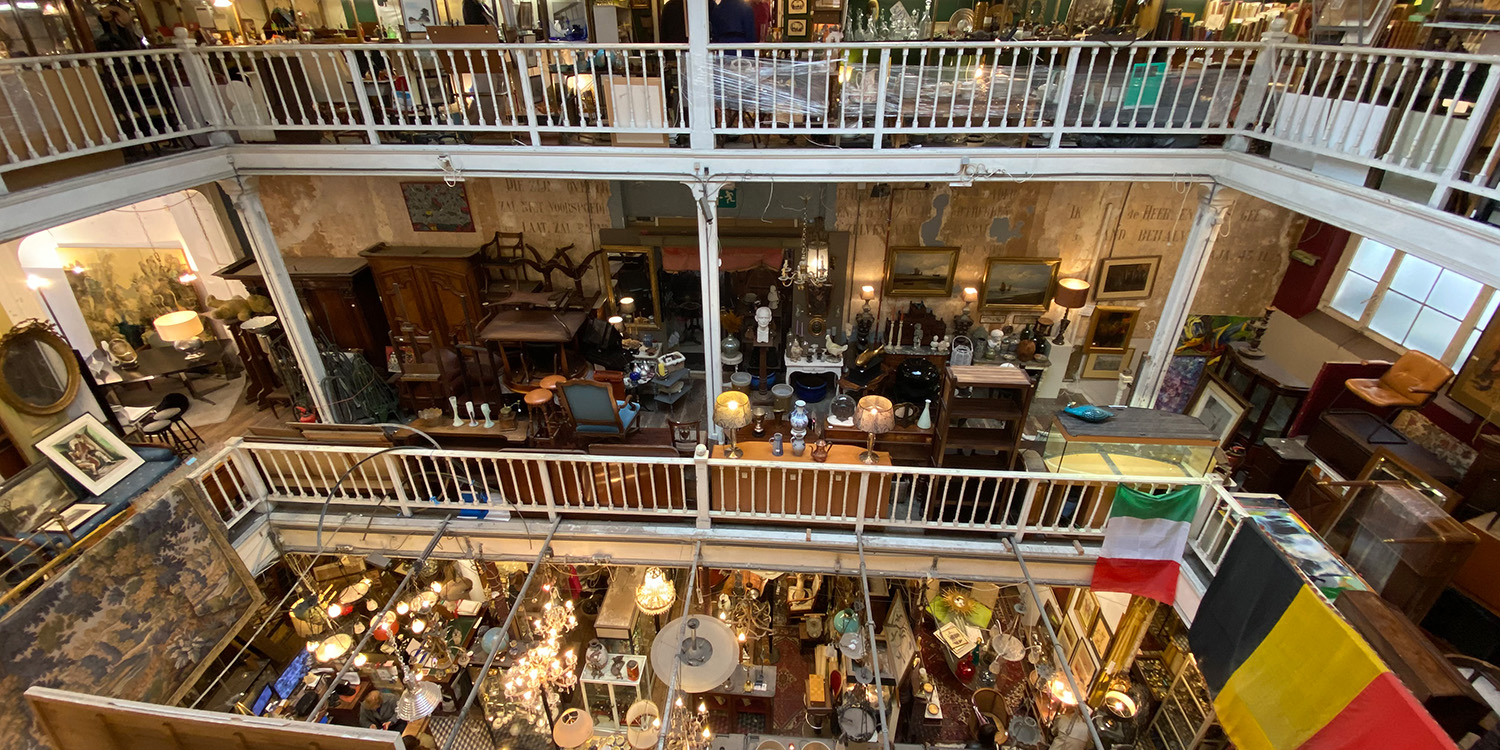
every day
Place du Jeu de Balle, Brussels
This flea market is an absolute highlight and takes place daily from 9 AM to 2 PM at Place du Jeu de Balle, Brussels.
You’ll find second-hand goods and antiques at around 350 stalls. While the market itself has become very touristy, it’s situated in the heart of the fantastic antiques district between Marolles and Sablon. This area is home to dozens of antique shops – some small, some as large as department stores (see photo) – ranging from affordable to luxurious. You’ll also find rustic pubs and stylish cafés in the neighborhood.
For parking, the underground garage at Place Poelaert is ideal. From this elevated square, you can take an elevator down to the Marolles district.
Prices can be quite high. The market has become very touristy and the traders often come from countries where trading is done in a bazaar-like manner.
Ciney Puces
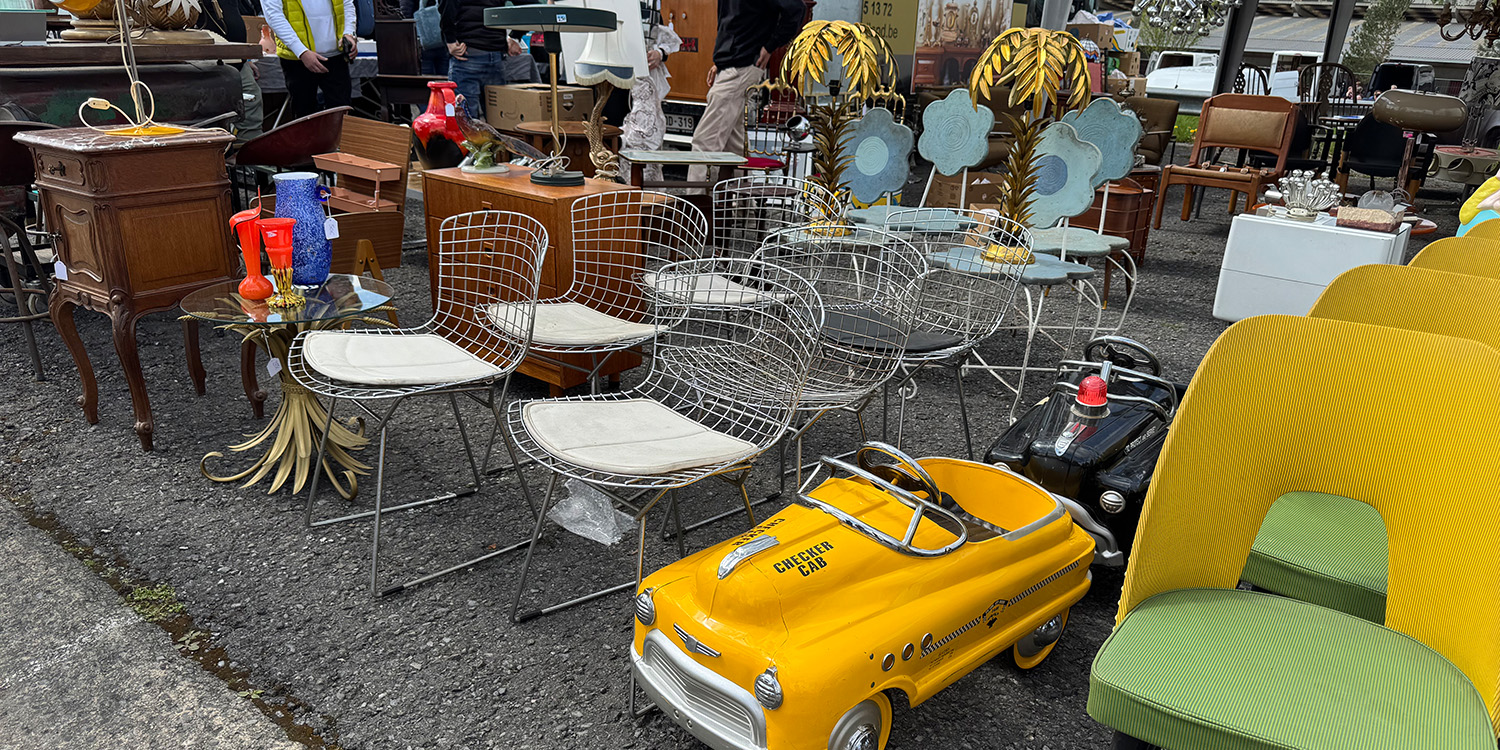
three times a year
Rue du Marché Couvert, Ciney
The flea and antique market in Ciney takes place three times a year over several days, from 10 AM to 6 PM.
It consists of three areas:
- The expo hall, where you’ll mainly find especially high-quality antiques such as statues, furniture, paintings, jewelry, and glassware.
- On the esplanade, there’s a small market offering a fairly mixed but high-quality range of goods.
- What I find most interesting, however, is the “Déballage” on the surrounding car parks: On the first day, which is always a Friday, at exactly 2 PM, the gates open, the dealers rush to their vehicles, and begin unpacking their goods. Buyers wander among them, peeking into the transporters. After about 30 minutes, everything is set up, and the market continues until 6 PM. On the following days, there may be significantly fewer stalls, so the main day is Friday. You will find a wide range of high-quality goods, but the focus is on decoration and furnishings.
In total, there are around 500 stalls. Admission to the grounds is subject to a fee, but there is more than enough free parking available. Prices range from moderate to high, but are mostly reasonable.
Marché aux Puces du Vieil Arlon
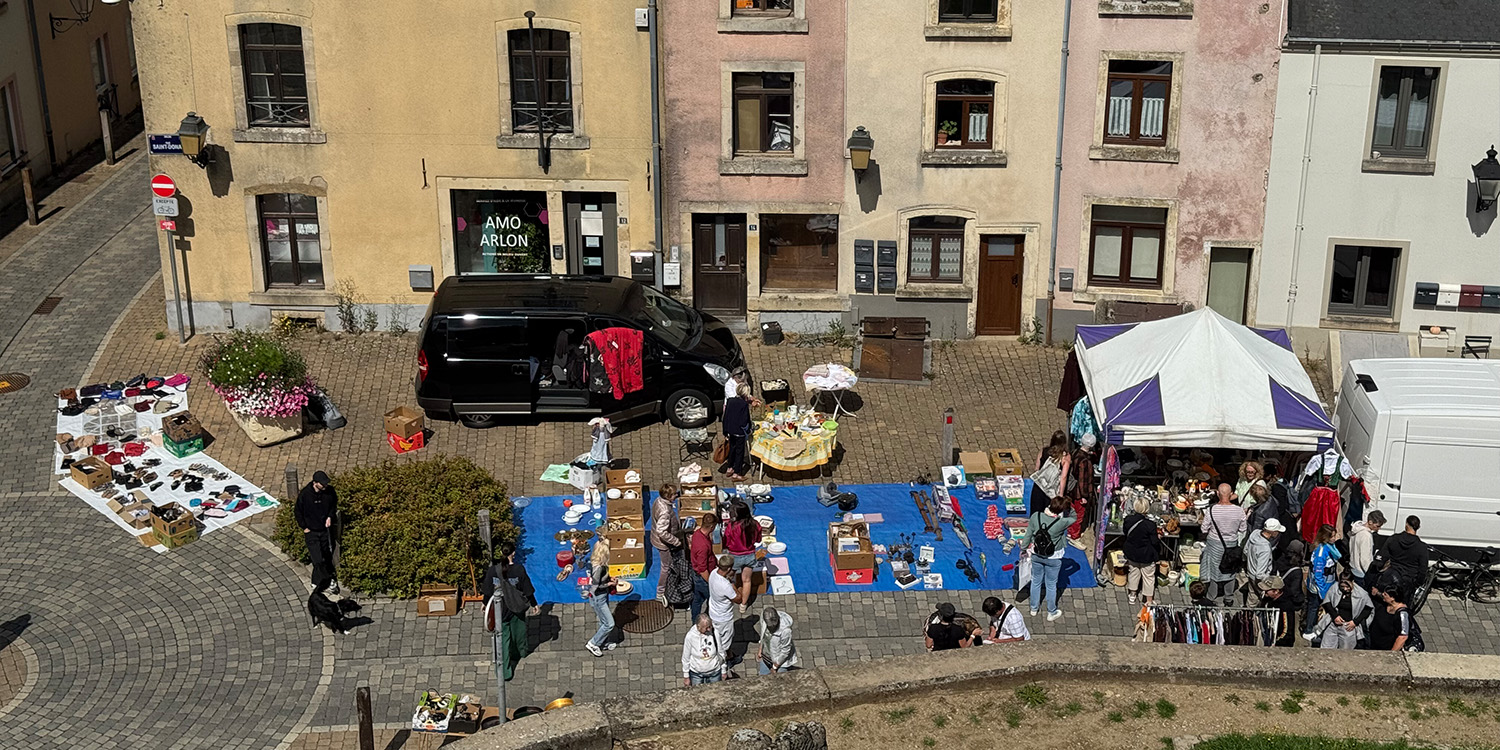
first Sunday of every month from March to October
Grand Place, Arlon
The flea market in Arlon takes place on the first Sunday of every month from March to October in the town center, and can be quite large in good weather.
There is a colorful and varied selection on offer, including goods for specialized collectors as well as true highlights.
A well-maintained underground parking garage is located beneath Place Léopold.
Prices are generally very moderate.
Brocante de Temploux
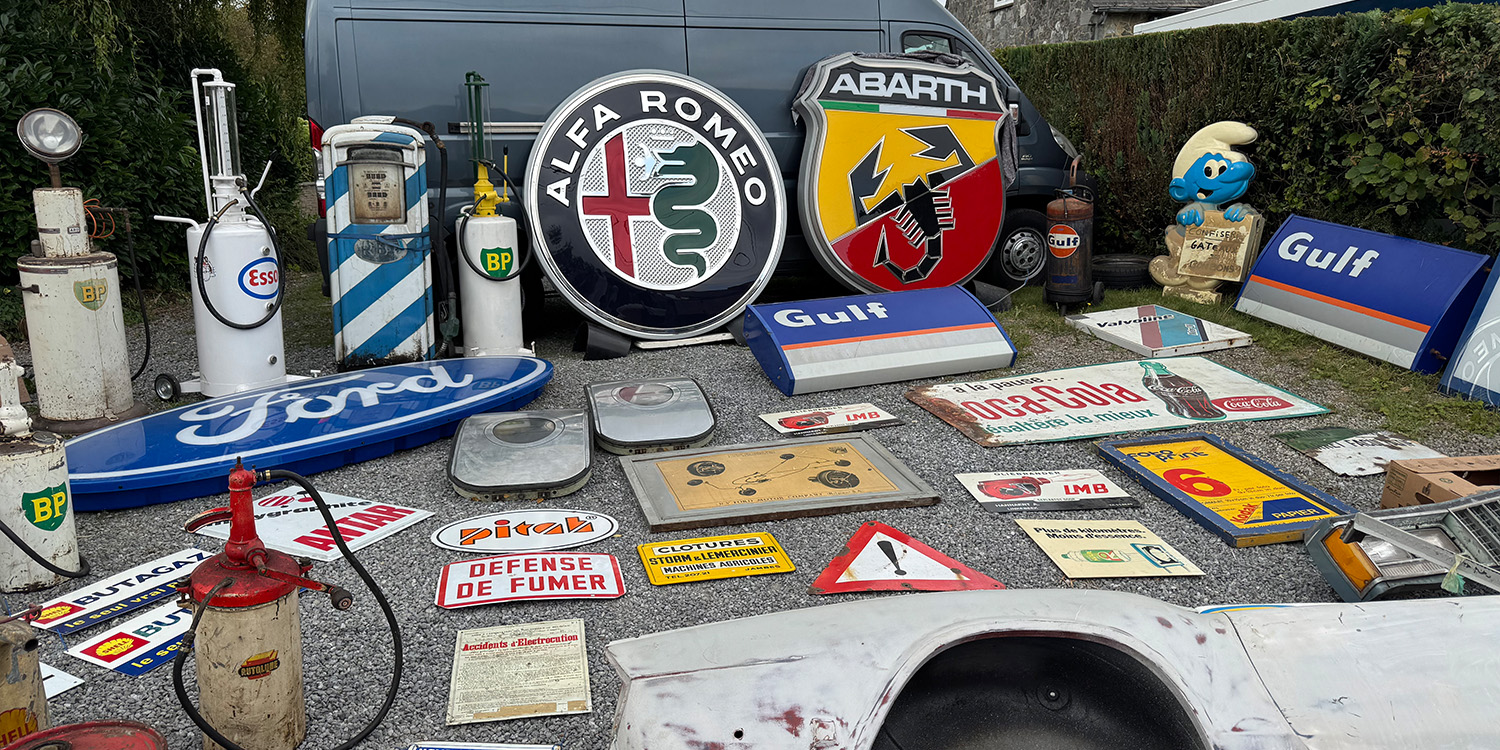
annually in August
Rue Arsène Grosjean, Namur
The flea market in Temploux (near Namur) is highly esteemed among collectors and takes place once a year in August (Saturday and Sunday) in the streets of the village.
The market focuses primarily on collectibles, with many specialized stalls. There are around 1,200 stalls spread over a 6-kilometer route, along with food stands and a lively program, including fireworks.
Plenty of parking is available, mostly on fields prepared by local farmers.
Prices are generally moderate to low.
The market can get extremely crowded, especially in good weather, but it is exceptionally well-organized, from parking to restrooms. Half the village pitches in to help!
Temploux is my favourite. Unfortunately, the market only takes place once a year.
Tips for Belgian Flea Markets
Dates: Always check online in advance. Even weekly markets can occasionally be cancelled, for example due to another event or a public holiday.
Offer / Attendance: Some markets are covered, but most are only partially or not at all. Light, intermittent rain is usually not a problem, but strong wind or unpleasantly cold weather can significantly reduce the number of stalls. Markets also tend to be quieter on holidays or during school breaks.
Opening hours: Most markets start earlier than the official time, and sellers often begin packing up before the listed closing time. If you’re looking for something specific, it’s best to arrive early.
Language: Depending on the region, Dutch or French – often English as well, or simply some hand gestures.
Bargaining: Prices are generally fair and realistic, but a polite and brief attempt to negotiate 10-20% off is usually acceptable – even if items are labeled with price tags. (Brussels is an exception: prices there often start high, and bargaining is more like a bazaar.) Don’t haggle if the price is already very good. Sometimes sellers will kindly refuse to negotiate if they’ve already offered their best price. In antique shops, bargaining is uncommon.
Payment: Bring enough cash, or locate a nearby ATM.
Bonus tips: Always ask for the price if you find something even halfway interesting – it’s often much lower than you’d expect. If you find something truly great, pick it up or talk to the seller right away – another interested buyer might appear out of nowhere.
You can find more markets and dates here.
